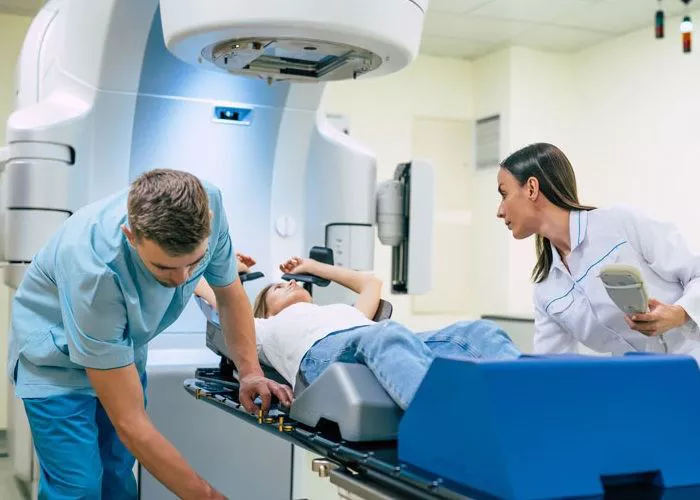In the world of cancer treatment, tattoos have long been a necessary but unwelcome part of the journey. For many cancer patients undergoing radiation therapy, tiny tattoos serve as permanent markers that help doctors deliver accurate treatment. However, for some, these markings are more than just a medical tool—they are constant reminders of their battle with cancer, which can affect their emotional well-being and self-image.
The use of permanent tattoos for radiation therapy is being reevaluated, with alternatives now offering a more personalized, less emotionally burdensome approach.
Emotional Toll of Radiation Tattoos
For patients, particularly women undergoing breast cancer treatment, tattoos can be a painful symbol of their fight. Traditionally, breast cancer patients receive several small tattoos, often on their chest or near their breastbone, to guide radiation therapy. These marks, which can be as small as a freckle, serve a medical purpose but also carry significant emotional weight.
Research has highlighted the psychological impact of these tattoos. One study notes that while tattoos may help radiation therapists position patients correctly, they can serve as constant reminders of the disease and the challenging treatments. Many patients feel the tattoos leave them with an emotional scar, reinforcing the trauma of their cancer journey.
Not all patients view the tattoos negatively, though. In a survey of breast cancer survivors, 59% of respondents reported that they were “never bothered” by the marks. However, 27% had negative feelings toward them, and 14% noted that the tattoos influenced their clothing choices. Even more striking, a study of young women diagnosed with breast cancer before age 40 found that 60% had “negative” or “very negative” feelings about the tattoos. A majority—78%—said they would have preferred a treatment option that avoided the use of tattoos, even if it meant extra time, effort, or costs.
Health Risks Beyond the Emotional Impact
The physical risks associated with radiation tattoos are also concerning. Some patients experience allergic reactions, keloid formation, infections, or permanent scarring. Tattoo removal is an option, but it is not always effective, and it can be costly. Recognizing the need for a more individualized approach, the American Society for Laser Medicine and Surgery offers a program that removes these tattoos free of charge for cancer patients.
A Tattoo-Free Future
Fortunately, advancements in radiation therapy are now offering an alternative to the tattooing process. Surface-guided radiation therapy (SGRT) is a promising new technology that eliminates the need for tattoos. SGRT uses a three-dimensional camera to track patient movements, even subtle shifts like breathing. This system allows for precise treatment delivery, and if the patient moves beyond a set threshold, the system automatically pauses the treatment. No tattoos or permanent markers are necessary.
At Northwell Health, the transition to tattoo-free radiation began in 2019. Initially, the technology was introduced for breast cancer patients, but its benefits have since expanded to other treatment areas. As familiarity with SGRT has grown, tattoo-free treatment has been extended to the head, neck, chest, abdomen, pelvis, and extremities. For many patients, this offers a chance to receive treatment without the added burden of visible tattoos. Patients, including men with prostate cancer and even children undergoing cancer treatments, are experiencing the benefits of a more personalized and comfortable treatment approach.
One of the most significant advantages of SGRT is that it frees patients from the social and psychological impact of tattoos. People no longer have to worry about hiding their tattoos or the lasting reminders of their treatment. For children with cancer, this approach eliminates the discomfort of tattoos and prevents permanent body modifications as they grow older.
In conclusion, the future of cancer care is evolving. Tattoo-free radiation therapy offers a more holistic and compassionate approach to treatment, removing unnecessary physical and emotional burdens from the recovery process. As this technology becomes more widely available, it promises to improve the patient experience, offering hope for a less invasive and more personalized cancer care journey.
Related topics:

